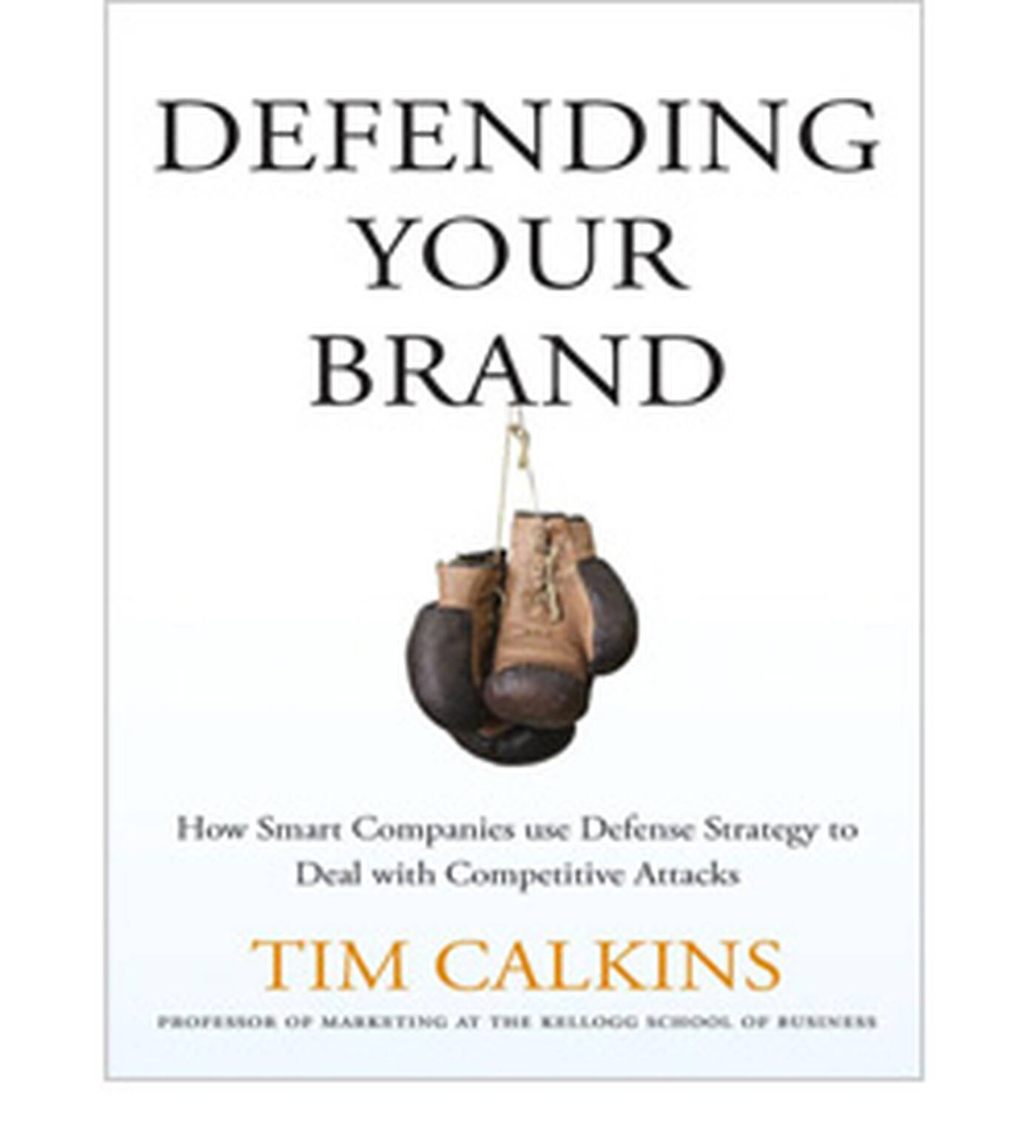Whenever a new competitor enters an industry or industrial segment, the industry’s dominant players face a critical decision: Should they defend their position or rely on market realities to take care of the newcomer? The decision is a complicated one. “You can’t defend everything,” says Kellogg School marketing professor Tim Calkins. But in his view companies defend far too infrequently. “You can get into trouble when you don’t defend,” he says. “You can trace a lot of business problems back to ineffective defensive efforts.”

In a chapter of his new book Defending Your Brand, Calkins focuses on this very question—one that, to date, has had minimal academic exposure. The book, informed by 11 years of experience at Kraft Foods, as well as his own and others’ academic research, aims to reverse that situation.
Why Defend?
Calkins highlights several reasons for mounting a defense against a competitor. The most obvious is a company’s need to protect its market share and profit. A defense plan can minimize a new entrant’s gains and, as one of Calkins’s sources points out, “push the pain [of losing market share] onto other players in the category.” Defensive thinking works over the long term as well as the short because, by reducing the chances that competitors’ new products will succeed, a good defense reduces the likelihood that the product will provide a serious threat in the future.
Defending a company’s turf also sends a signal to the entire industry segment. “If your competitors know that you will defend aggressively, they will take that into account when thinking about entering your category by launching a new product,” Calkins writes. And the decision to defend plays the percentages. “Defense programs generally work,” Calkins explains. A new business has to change customer behavior to be successful; this is a challenge because people resist change. A defender simply has to maintain the current situation. “The status quo works in the defender’s favor,” Calkins adds.
When Not to Defend
Calkins takes care to point out that mounting a defense does not always represent the best action for a firm whose brand comes under attack. He cites “a number of very valid reasons why defending might not be the best approach.”
Two of those reasons, oddly enough, occupy opposite ends of the spectrum: a threat may be too small, or it may be too overwhelming. In the former case, a competitive new product may present very little risk to a company’s bottom line. It might, for example, target a different customer segment or a different region from those where the company has its strength. Or the competitor may simply be too small to cause concern. “A person making a salad dressing in her garage will not be a huge problem for Clorox, a company that produces millions of bottles of Hidden Valley Ranch salad dressing every year,” Calkins writes. And in the case of a strong competitor aiming at a vulnerable segment of an established company’s market, the best strategy may be to retreat—by moving to a new location, for example.
Other reasons to shy away from defending include corporate concerns about public perception. Fear that the company may fall foul of anti-trust regulations may overturn an otherwise compelling case for defense. The simple issue of public relations can play a similar role. A giant food company such as Nabisco would risk a PR disaster if it spent millions of dollars attacking Girl Scout cookies, Calkins notes wryly.
Corporate planning can also influence a decision to stand pat against a competitor. A company that plans to leave the business segment under attack, or that can pivot toward more profitable opportunities, should probably avoid the expenditure of money and time on defense. And in some cases a firm might take the same inaction because, paradoxically, it welcomes a competitor. Companies opening up a new business category, for example, or introducing new technology into an established category can benefit from competitors who can add momentum to the launches—and coincidentally help to counter anti-trust issues.
Wrong Reasons to Avoid Defense
Calkins also cites the reverse of that thinking—that a defense will validate the attacker’s idea and hence give it credibility—as one of several “wrong reasons” to avoid defending against a new competitor. Validating a new product idea is a concern, but there are many ways to defend that are essentially invisible to customers. The issue can be addressed by carefully constructing the defense plan.
Small companies can also fall into the trap of expecting larger, established firms in their market to bear the brunt of defense against newcomers. But in fact, Calkins says, the larger firms’ defense may result in the new entrants taking market share from the small organizations that do not defend. In this case, a defense plan can limit the newcomer’s share of the market and help to ensure that any of its gains come at the expense of other firms in the category.
“People get excited about growth initiatives; as a result, they don’t defend. There’s a perception that if you’re defending, that’s a bad sign somehow.”
Another big mistake is thinking the new entrant has a bad idea and will fail anyway. “If the competitor has a clunker of an idea, why bother to defend against it?” Calkins asks. But the perception may be wrong; the competitor’s bad idea may actually be a good one. When Honda entered the American motorcycle market in 1959 with a 50 cc machine aimed at students, executives at industry leader Harley Davidson regarded the company as too marginal and its product as too quirky to defend against. But Honda used its machine as the entry card to the market. By 1982 Honda led the industry with 37 percent of sales; Harley had just 4 percent, although it has since recovered.
The Appeal of Growth
Finally, one of the strongest reasons executives refrain from defending is a bias toward growth. After all, to afford an effective defense, executives must cut back on other activities, most notably those involving corporate growth. “People get excited about growth initiatives; as a result, they don’t defend,” Calkins says. “There’s a perception that if you’re defending, that’s a bad sign somehow.”
That same prejudice often emerges in executives’ misjudgment of both the risk that competitors present and the value of their companies’ own products. “Managers get so confident about their own efforts that they miss what the others are doing,” Calkins asserts. That thought yields the chapter’s take-away message: “Don’t underestimate competitive threats,” he says. “Don’t underestimate the value of a good defense.”
(Editor’s note: Defending Your Brand was named Marketing Book of the Year for 2013 by Expert Marketer Magazine.)
Calkins, Tim. 2012. Defending Your Brand: How Smart Companies Use Defensive Strategy to Deal with Competitive Attacks. Palgrave Macmillan.


